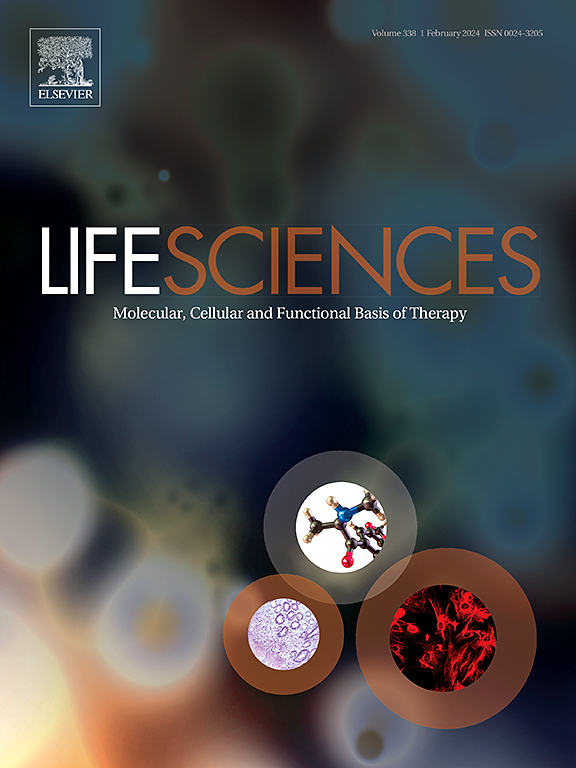METTL3-mediated TUG1 regulation of miR-9 in doxorubicin resistance in HCC
IF 5.1
2区 医学
Q1 MEDICINE, RESEARCH & EXPERIMENTAL
引用次数: 0
Abstract
Aims
Hepatocellular carcinoma (HCC) is one of the most prevalent malignant human tumors and a main cause of cancer death worldwide. Drug resistance limits the use of doxorubicin (DOX), a proliferation inhibitor used to treat HCC. This study aims to reveal the molecular mechanisms underlying DOX resistance and develop more effective therapies for HCC.
Materials and methods
An N6-methyladenosine (m6A) RNA immunoprecipitation sequencing-quantitative real-time polymerase chain reaction experiment was performed to assess m6A RNA methylation in HCC cells. A patient-derived xenograft mouse model was established to investigate the function of a chimeric peptide supramolecular nanoparticle system (SP94 dR/ miR-9 nanoparticles) in vivo.
Results
We found that the expression levels of METTL3 and TUG1 were upregulated in HCC, which was closely related to poor overall survival. Moreover, METTL3 and TUG1 depletion increased HCC cell sensitivity to DOX. METTL3 silencing repressed TUG1 expression in an m6A-dependent manner. Meanwhile, TUG1 depletion sensitized HCC cells to DOX via EIF5A2 by upregulating miR-9. Furthermore, SP94-dR/miR-9 nanoparticles dramatically enhanced HCC cell sensitivity to DOX by regulating autophagy in vitro and inhibiting tumor growth in vivo.
Significance
Our data identified a novel molecular pathway comprising the METTL3-m6A-TUG1-miR-9-EIF5A2 signaling axis in HCC, providing new targets for future DOX resistance management.
mettl3介导的TUG1调控miR-9在HCC患者阿霉素耐药中的作用。
目的:肝细胞癌(HCC)是最常见的人类恶性肿瘤之一,也是世界范围内癌症死亡的主要原因。耐药限制了阿霉素(DOX)的使用,阿霉素是一种用于治疗HCC的增殖抑制剂。本研究旨在揭示DOX耐药的分子机制,并开发更有效的HCC治疗方法。材料与方法:采用n6 -甲基腺苷(m6A) RNA免疫沉淀测序-定量实时聚合酶链反应实验,评估HCC细胞中m6A RNA甲基化。为了研究嵌合肽超分子纳米颗粒系统(SP94 dR/ miR-9纳米颗粒)在体内的功能,建立了一种患者来源的异种移植小鼠模型。结果:我们发现METTL3和TUG1在HCC中表达水平上调,与总生存期差密切相关。此外,METTL3和TUG1缺失增加了HCC细胞对DOX的敏感性。METTL3沉默以m6a依赖的方式抑制TUG1的表达。同时,TUG1缺失通过上调miR-9,通过EIF5A2使HCC细胞对DOX增敏。此外,SP94-dR/miR-9纳米颗粒通过调节体外自噬和抑制体内肿瘤生长,显著增强HCC细胞对DOX的敏感性。意义:我们的数据确定了HCC中包含METTL3-m6A-TUG1-miR-9-EIF5A2信号轴的新分子途径,为未来的DOX耐药管理提供了新的靶点。
本文章由计算机程序翻译,如有差异,请以英文原文为准。
求助全文
约1分钟内获得全文
求助全文
来源期刊

Life sciences
医学-药学
CiteScore
12.20
自引率
1.60%
发文量
841
审稿时长
6 months
期刊介绍:
Life Sciences is an international journal publishing articles that emphasize the molecular, cellular, and functional basis of therapy. The journal emphasizes the understanding of mechanism that is relevant to all aspects of human disease and translation to patients. All articles are rigorously reviewed.
The Journal favors publication of full-length papers where modern scientific technologies are used to explain molecular, cellular and physiological mechanisms. Articles that merely report observations are rarely accepted. Recommendations from the Declaration of Helsinki or NIH guidelines for care and use of laboratory animals must be adhered to. Articles should be written at a level accessible to readers who are non-specialists in the topic of the article themselves, but who are interested in the research. The Journal welcomes reviews on topics of wide interest to investigators in the life sciences. We particularly encourage submission of brief, focused reviews containing high-quality artwork and require the use of mechanistic summary diagrams.
 求助内容:
求助内容: 应助结果提醒方式:
应助结果提醒方式:


